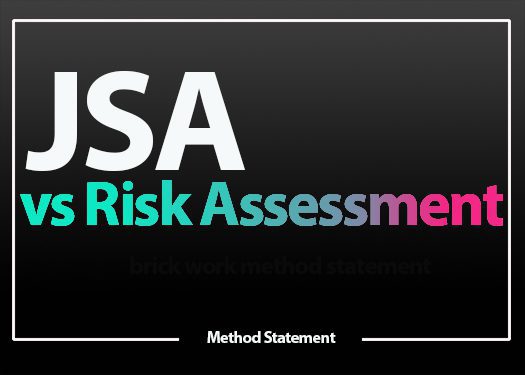Table of Contents
The distinction between JSA vs risk assessment
JSA vs risk assessment is often used interchangeably or confused with each other. However, there is a discernible difference between them, making it crucial to differentiate between the two in your processes and procedures.
The primary difference between a JSA and risk assessment is their scope.
A JSA concentrates on the specific risks associated with a particular job, focusing on the hazards associated with each task step. Conversely, a risk assessment provides a higher-level or broader view of all operational risks across an entire business, project, or type of activity.
To highlight the contrast between a JSA and risk assessment, let’s examine the definition of each:
What is Job Safety Analysis (JSA)
A Job Safety Analysis (JSA) is a formal process that identifies the hazards associated with a particular job. The process typically entails breaking down the job into a series of steps and comprehending and controlling the hazards associated with each step.
What is Risk Assessment
A risk assessment is a formal safety process that identifies all of the risks associated with an activity or operation. Once identified, each risk is analyzed on important dimensions, and controls are implemented to mitigate or eliminate as many risks as possible, using the analysis to prioritize certain risks.
As evident from the above explanations, the key difference between the JSA and risk assessment is their level of scope.
So what does a JSA look like?
The best way to comprehend the difference between a JSA and risk assessment is to observe an example of both.
As seen in this JSA example, the JSA pertains to a specific job, which involves mechanical excavation on the Gregory Street project. The job is then divided into a series of steps as previously described. In this instance, the steps involved:
- Attaining drawings
- Setting up machinery
- Beginning excavation
- Loading excavated materials
As demonstrated in the above example, the difference between a JSA and risk assessment is becoming clearer, with each step of this specific activity outlined in the JSA.
What does a risk assessment look like?
To gain an even clearer picture of the difference between a risk assessment and JSA, let’s also look at a risk assessment.
Risk assessments may be performed for a specific project or for a particular activity or operation that takes place at regular intervals for a company or worker.
In this case, our risk assessment is for lone working. The difference between this risk assessment and the JSA described earlier is that this risk assessment is broader and more operational.
The example below describes the risks associated with an activity – lone work – but it is likely completed at the start of a year or a new project to identify the risks associated with performing that activity at any time. A similar risk assessment for this type of activity may be performed again next year or when a new worker starts on the project, but it is not as job-specific.
Organizing JSA and risk assessments to ensure they are treated differently
The difference between a JSA and risk assessment can be further confused when the two processes or templates that dictate the processes are blurred.
Many companies that rely on paper-based forms and physical folders make it difficult for people to access and complete the right processes because everything can be easily confused, changed, and mixed.
Organizing JSA and risk assessments through safety software or a risk assessment app makes it infinitely easier for someone to understand the difference between them.
When organized properly, a worker can simply open the safety system and access the JSA when completing a JSA or access the risk assessment template when creating a new risk assessment. This way, people are always accessing and doing the right procedure for the right tasks, and data and information remain standardized and accurate.
Both JSA and risk assessments are crucial for ensuring workplace safety. It’s important to have clear and concise communication around these processes to avoid confusion and ensure everyone is aware of their purpose and how to perform them correctly.
One way to achieve this is by establishing consistent and reliable processes that are easy to access and understand. This can involve creating standard operating procedures, providing training to employees, and using clear and concise language in all safety-related communications.
By doing so, you can reduce the risk of workplace accidents and ensure that everyone is working together towards a safer and healthier work environment.
Are JSAs and risk assessments mandatory?
In many industries, JSAs and risk assessments are mandatory as part of health and safety regulations.
When should you use a JSA versus a risk assessment?
A JSA is typically used for high-risk, complex, or non-routine tasks, while a risk assessment is used to evaluate hazards across an entire project or workplace.
What is the main difference between a JSA and a risk assessment?
A JSA is a detailed analysis of a specific task or job, while a risk assessment is a broader evaluation of potential hazards across a workplace or project.
Who typically conducts JSAs and risk assessments?
Both JSAs and risk assessments can be conducted by health and safety professionals, supervisors, or workers with appropriate training.
How do JSAs and risk assessments improve workplace safety?
By identifying potential hazards and implementing appropriate control measures, JSAs and risk assessments help to minimize the risk of accidents and injuries in the workplace.
tag: # job safety analysis, job specific risks, JSA, JSA vs risk assessment, workplace safety, risk management, osha, quantitative risk assessment, manage risks, lockout/tagout, assessing risk, safe system of work, risk assessments, construction, analytics, ppe, risks, hazards
